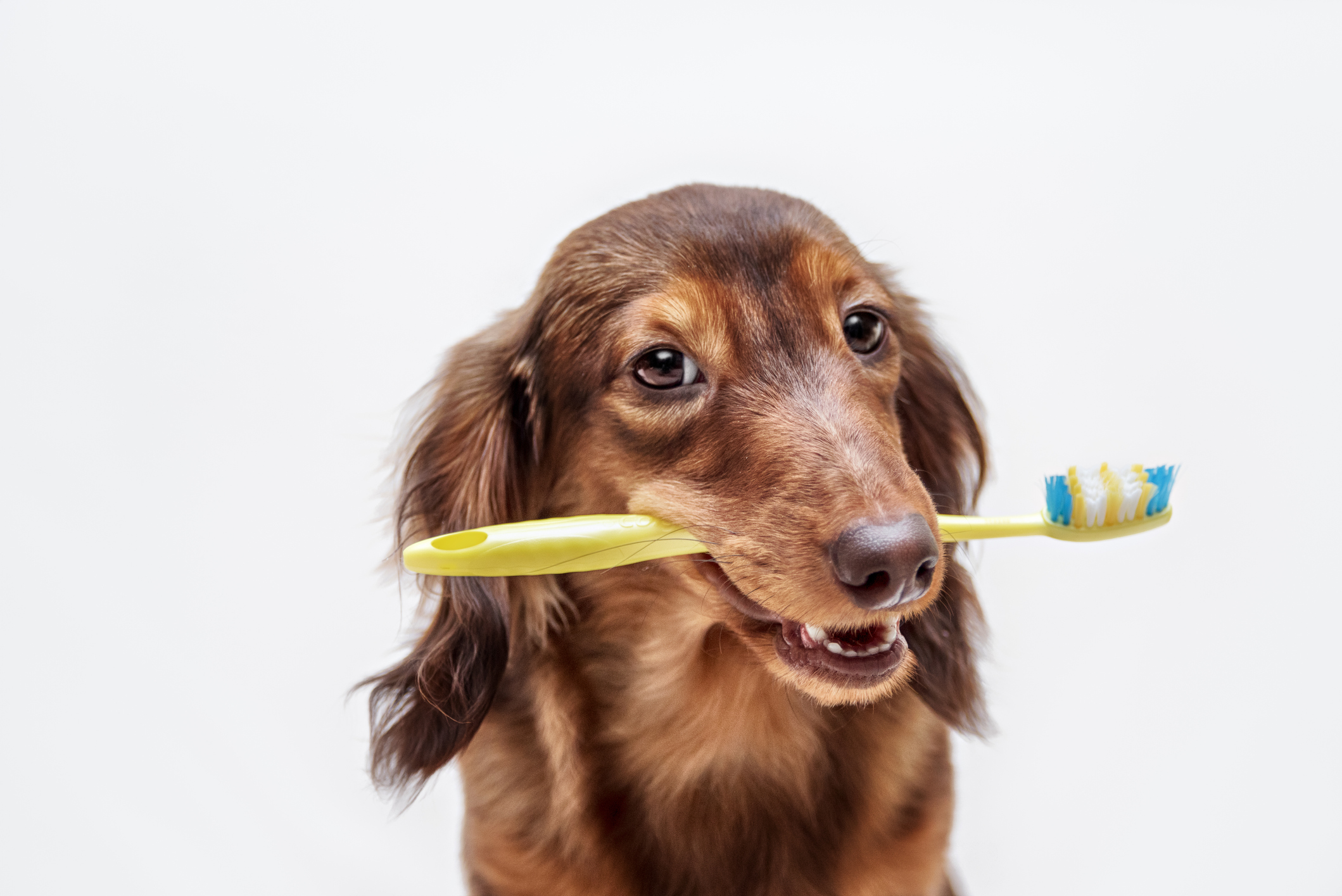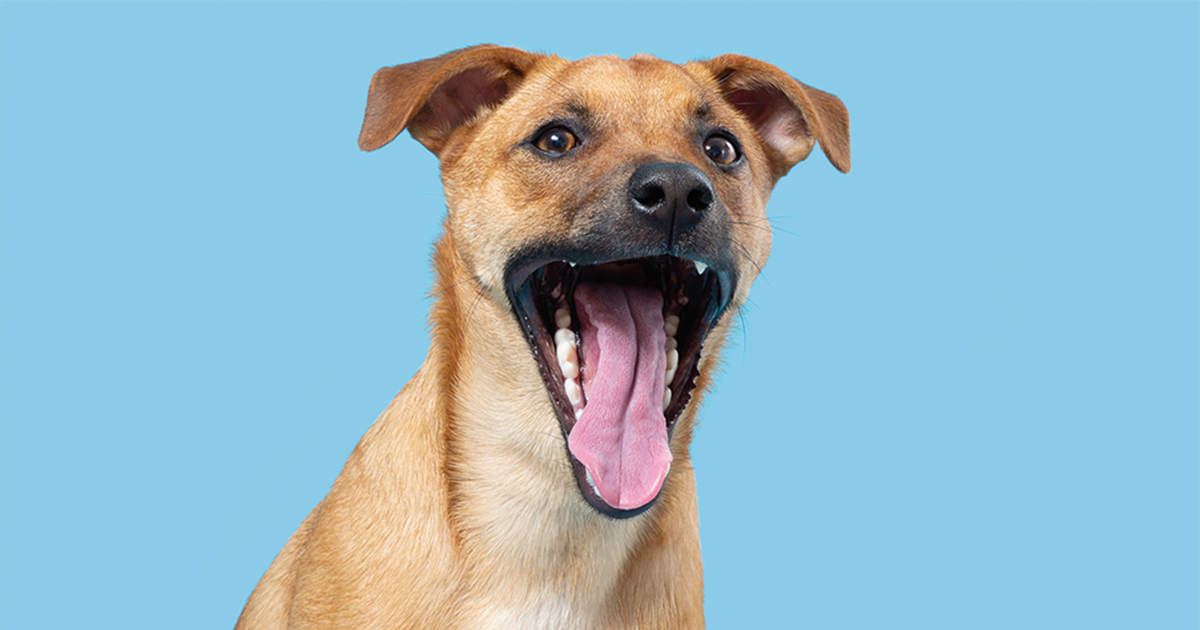For Pups With Short Attention Spans…
Because periodontal disease is so common in dogs, ideally you should brush your dogs teeth everyday. Realistically however, brushing your dog’s teeth every other day will significantly reduce their chance of developing dental problems. For uncooperative dogs, explore toothbrush free options such as dental kits and dental chews, and don’t forget routine vet visits.
Dentists are always hounding us to brush our teeth at least twice a day, for a mouthful of reasons. Gingivitis, cavities, periodontitis — the list goes on, and like bacteria, always seems to grow.
But does the same rule of twice-daily teeth brushing apply to dogs?
If you’re up to date on your puppy parenting, you know that maintaining healthy oral hygiene is key to keeping your pooch healthy, happy, and bright. So, just like you, dogs need their chompers brushed in order to ward off periodontitis (a.k.a. the dreaded doggy dental disease.)
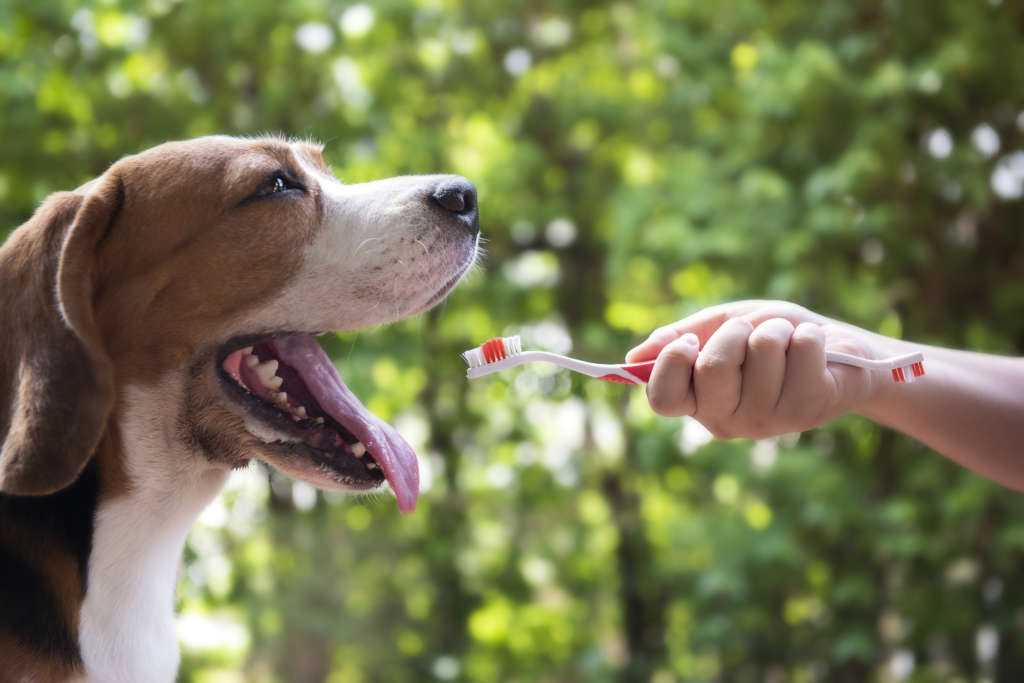

The “ideal” answer?
Once a day. At least, that’s what the American Veterinary Medical Association recommends. But we understand that daily puppy brushing is easier said than done. Not everyone has the time or the patience to brush their dog’s teeth every day.
The “realistic” answer?
At least once every other day.


Why Do I Need to Brush My Dog’s Teeth?
Plaque forms within hours and can mineralize to calculus in a day1. This calculus also houses bacteria, and together they stimulate inflammation and promote dental disease. Practically speaking, brushing any less than every other day does not accomplish very much to prevent calculus accumulation from happening.
Bad breath is a telltale sign of dental disease, and indicates that a dog has disease below the gumline (in addition to anything on the crowns of the teeth). Recent studies show that almost 90% of dogs2 develop some form of periodontal disease by the time they reach age 2. Additionally, periodontal disease progresses much faster in dogs than it does in people (about five times faster!).
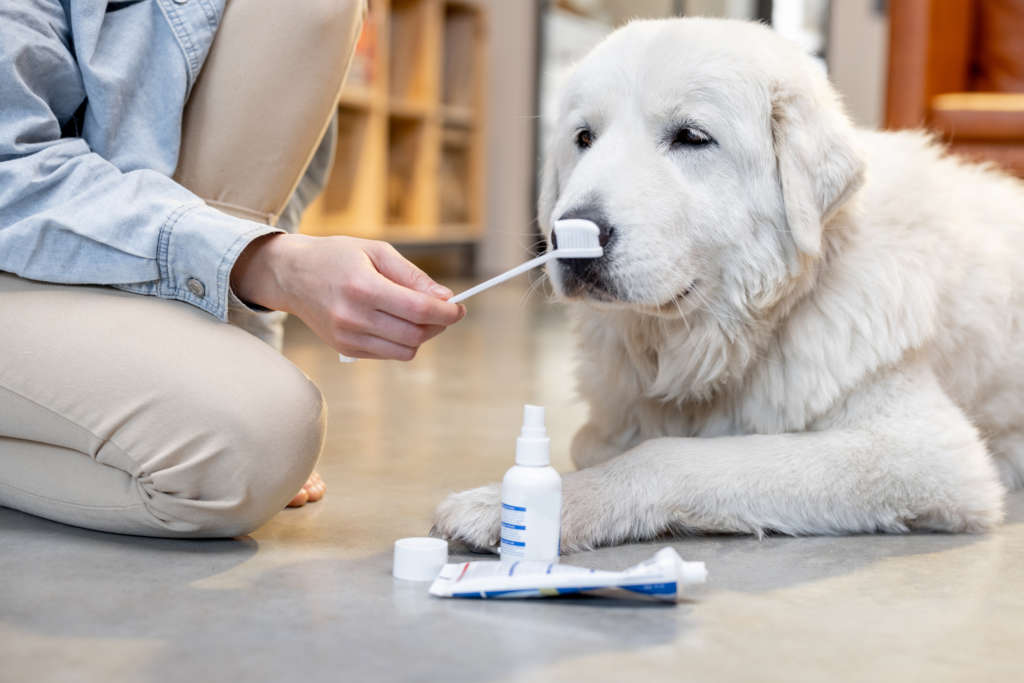

How Often Should You Really Brush Your Dog’s Teeth?
Plaque is a gooey biofilm consisting of million of bacteria that coat teeth. Left unbrushed, plaque calcifies and turns into tartar within 24-72 hours. Once plaque progresses to the tartar stage, simple toothbrushing and dental gizmos can’t remove it. At this juncture, you’ll need to visit a doggy dentist for a routine teeth cleaning.
So, you want to brush often. Routine brushing at least once every other day will shorten the window of opportunity that plaque has to harden into tartar.
Related Article: What’s The Best Toothbrush For My Dog?
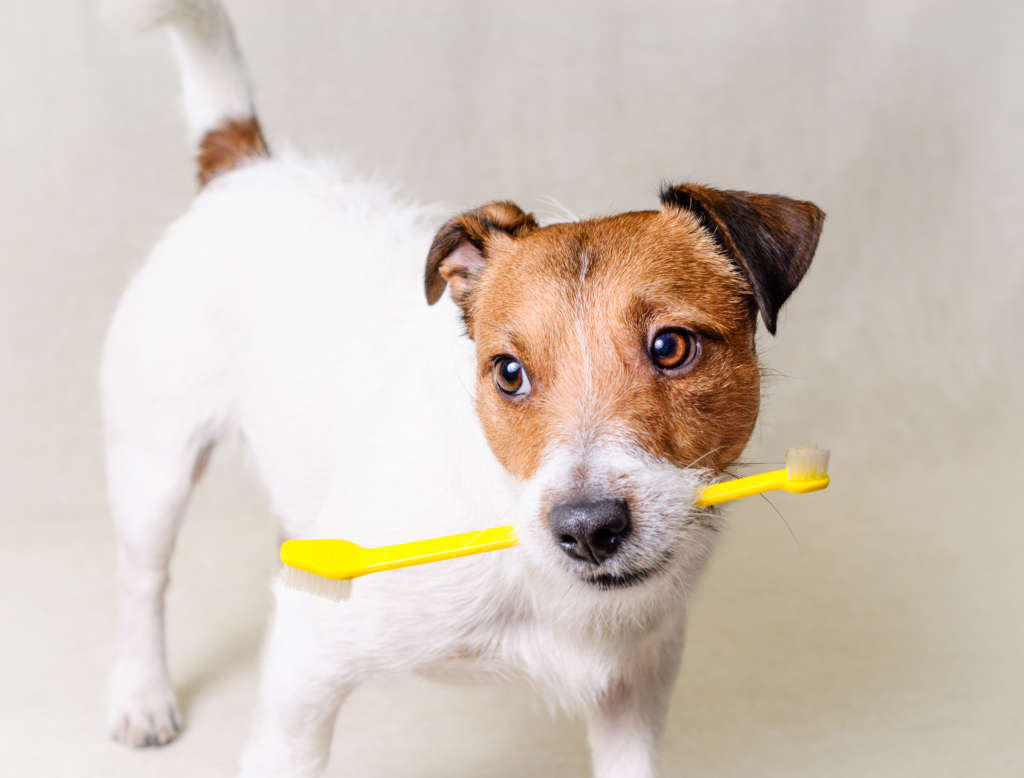

How Do I Brush My Dog’s Teeth?
Unless you have a chill dog who has a secret love for a shiny smile, canine brushing can feel intimidating at first. But once you set a routine, it’ll feel as breezy as dinner time. Follow these steps for a simple at-home dentist primer3, and for a more exhaustive rundown, check out this article on brushing tips for new puppy parents.
- Establish a brushing routine
- Use a toothbrush designed for dogs
- Use dog-friendly toothpaste
- Be patient, and reassess as you go
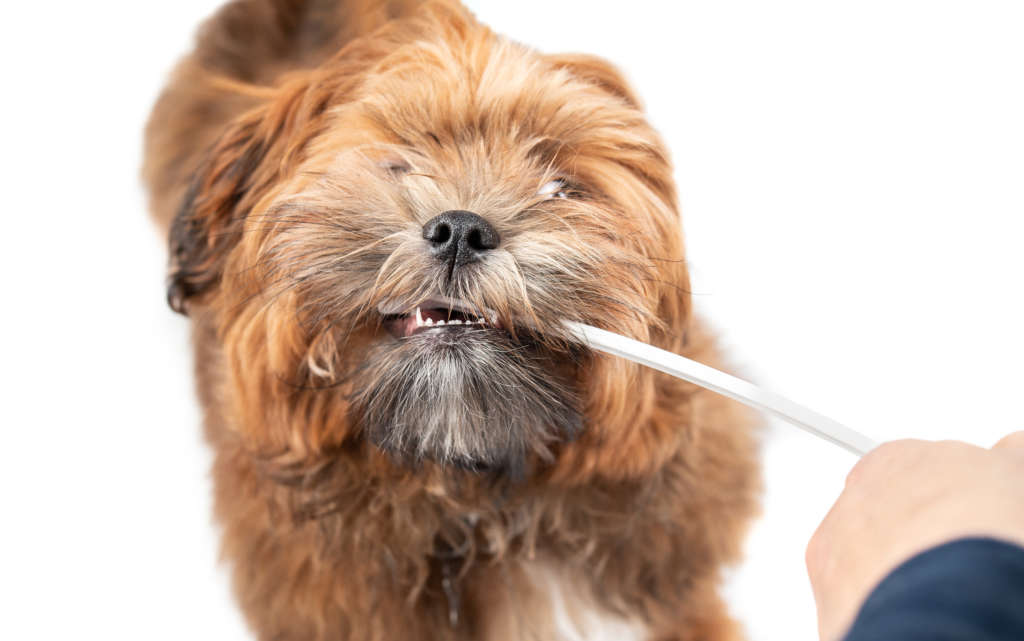

Supplement with Chews
Research also suggests that the daily addition of dental chews reduces the accumulation of plaque deposits, as well as gingivitis scores4. This is great news for dog owners, because this means your dog can amuse themselves with dental chews while promoting a healthy mouth at the same time.
Providing daily dental chews promotes oral health in the absence of teeth-brushing, and while it can’t replace the efficacy of teeth-brushing, it can be an effective and engaging way for pups to keep their pearly whites looking bright.
What if My Dog Won’t Cooperate?
For these dogs, consider the BARK Bright Dental Kit, a toothbrush-free daily dental system that includes a 1-month supply of uniquely-shaped dental chews and triple-enzyme toothpaste.
How It Works:
- Squeeze the toothpaste along the chew’s specially-designed groove.
- Give to your dog (they’ll think it’s a treat!).
- As they chew, the chew itself helps scrub away debris, while the toothpaste helps break down plaque and bad breath-causing bacteria even after they’re finished.


Other Tips To Remember
- DON’T use human toothpaste
- DO make it a routine you and your dog can enjoy (or at least tolerate!)
This article has been reviewed by Margo Hennet, DVM.
Margo Hennet, DVM, cVMA, and veterinarian at BARK is a canine nutrition, health, & wellness connoisseur. She has a combined 10 years of experience in clinical medicine, research, and education—that’s 70 dog years of know-how—and graduated from Colorado State University as a Doctor of Veterinary Medicine. She completed specialized training in internal medicine prior to working as a general practitioner in Colorado, has authored peer-reviewed publications and textbook chapters, holds certification in veterinary medical acupuncture, and is a member of the American Academy of Veterinary Nutrition and American Veterinary Medical Association.
Sources
1 Brooks, W. “Dental Home Care for Dogs and Cats.” Veterinary Partner. February 2019. https://veterinarypartner.vin.com/default.aspx?pid=19239&id=4951515
2 B. Niemiec, J. Gawor, A. Nemec et al. “World Small Animal Veterinary Association Global Dental Guidelines.” Journal of Small Animal Practice. July 2020 https://onlinelibrary.wiley.com/doi/10.1111/jsap.13132
3 Yuschak, S. “Low Stress Toothbrushing for Dogs.” Veterinary Partner. April 2021. https://veterinarypartner.vin.com/default.aspx?pid=19239&id=10183843
4 Gorrel, C., & Rawlings, J. M. (1996). “The Role of Tooth-brushing and Diet in the Maintenance of Periodontal Health in Dogs.” Journal of Veterinary Dentistry, 13(4), 139–143. https://doi.org/10.1177/089875649601300405



